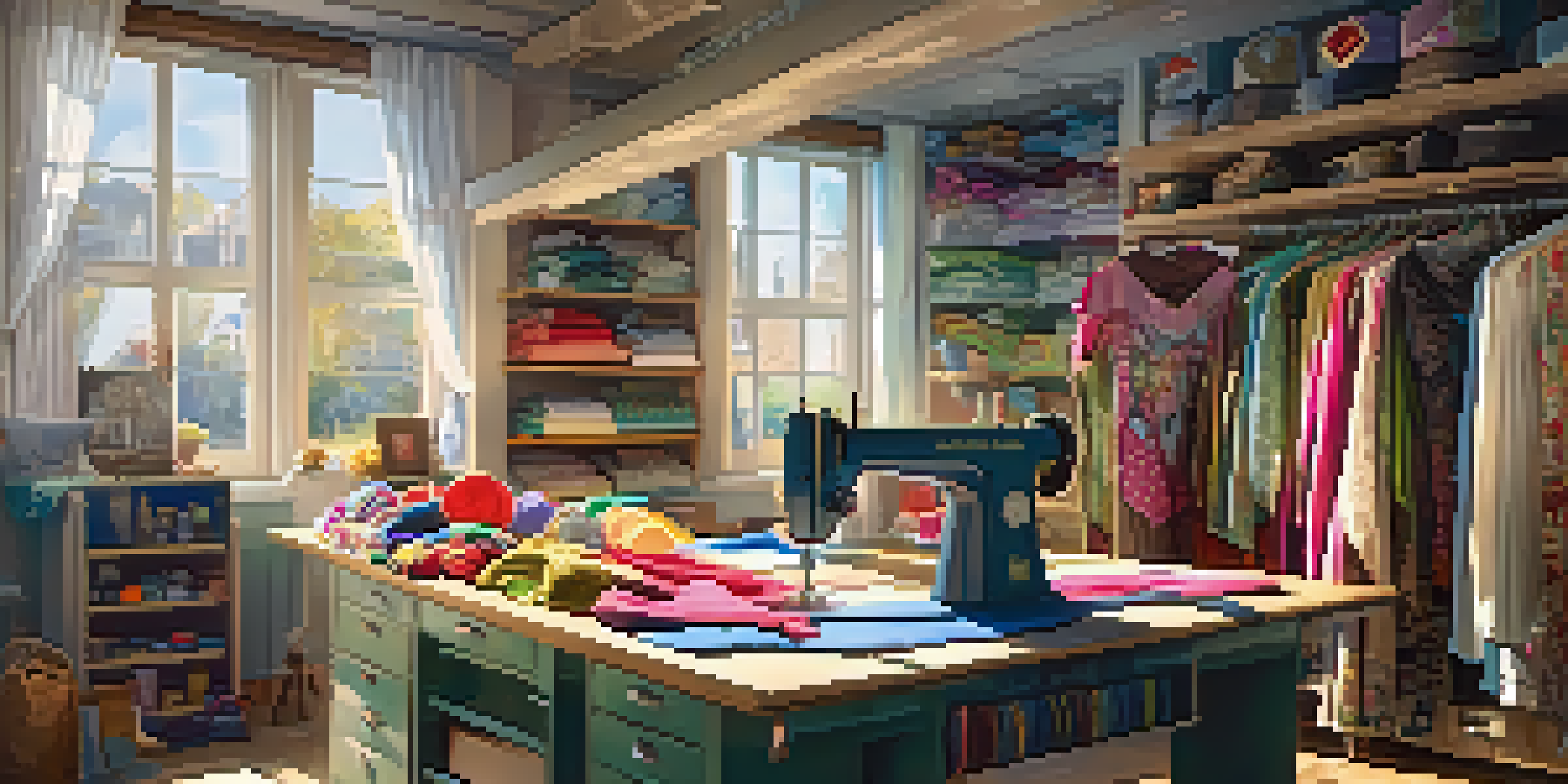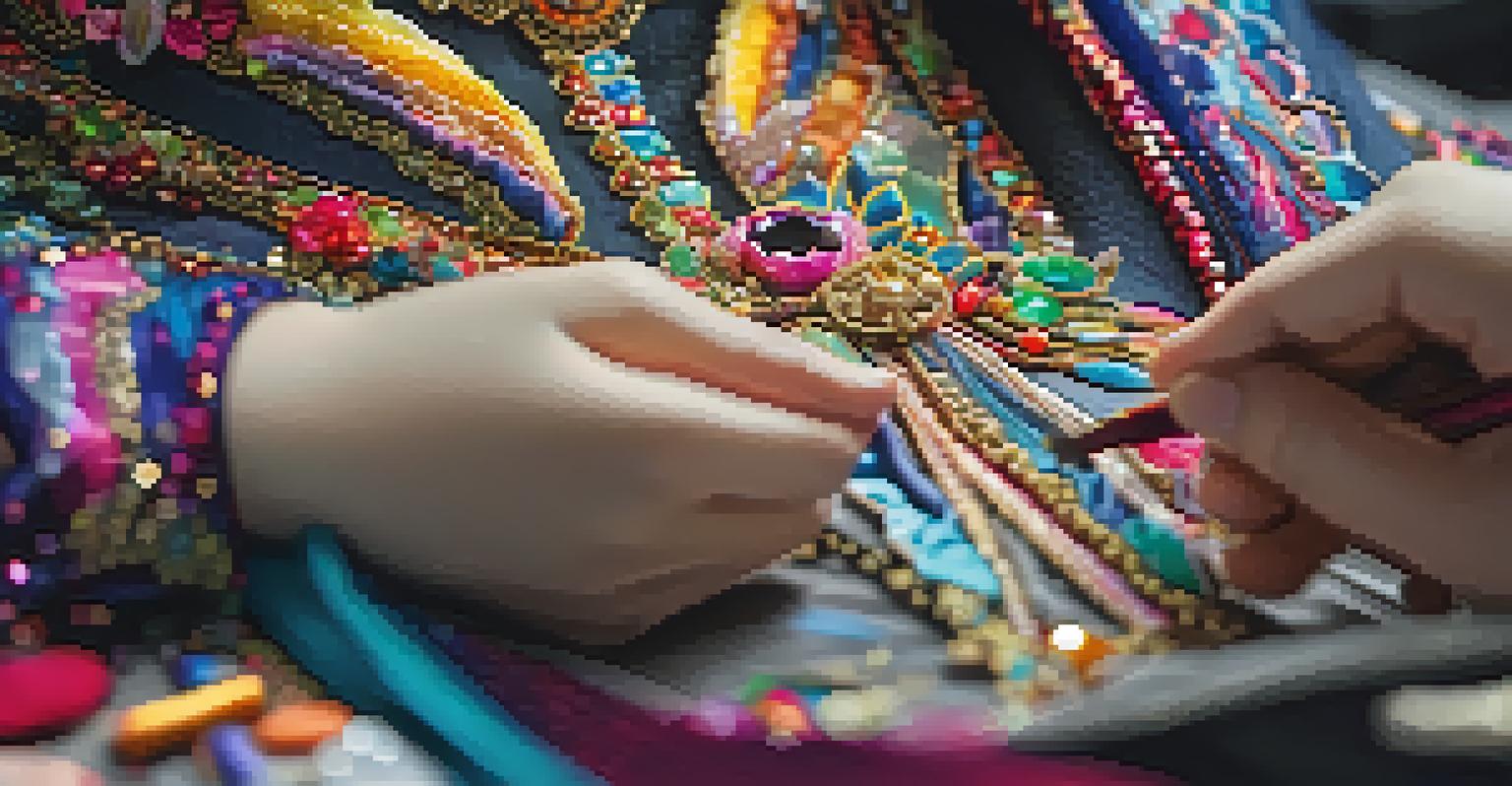Sewing Basics for Cosplay: Essential Skills You Need

Understanding Fabric Types: The Foundation of Your Cosplay
Choosing the right fabric is crucial for any cosplay project. Different materials have unique properties that can dramatically affect your costume's look and feel. For instance, cotton is breathable and easy to work with, while satin adds a touch of glamour but can be slippery to handle.
The details are not the details. They make the design.
It's helpful to sample different fabrics before committing to a full costume. You can visit local fabric stores or even browse online to understand how each fabric drapes and stretches. This way, you’ll find the best match for your character's design.
Don't forget to consider the fabric's weight and durability, especially if your cosplay involves intricate details or heavy embellishments. The right fabric not only enhances your costume's appearance but also ensures you feel comfortable wearing it for long periods.
Essential Tools: What You Need for Successful Sewing
To start sewing, you'll need a few essential tools. A sewing machine is a valuable investment, providing speed and precision that hand sewing can’t match. However, having basic hand-sewing needles and thread on hand is also important for quick repairs.

Other handy tools include fabric scissors, measuring tapes, pins, and a seam ripper. Each of these tools has its purpose, helping you cut, measure, and assemble your fabric pieces with greater accuracy. For instance, a seam ripper is invaluable when you make mistakes—it can save your project from becoming a disaster!
Choose the Right Fabric Wisely
Selecting the appropriate fabric enhances your cosplay's look, feel, and comfort.
Lastly, consider getting a rotary cutter and cutting mat for more intricate cuts. These tools can make your sewing process smoother and are particularly useful for cutting out patterns accurately.
Basic Sewing Techniques Every Cosplayer Should Know
Mastering a few basic sewing techniques can elevate your cosplay game. Start with the straight stitch, the foundation of most sewing projects, and then explore techniques like zigzag stitching, which helps prevent fabric fraying. Learning to sew hems is equally important, as it gives your costume a polished finish.
Creativity is allowing yourself to make mistakes. Design is knowing which ones to keep.
Another essential technique is gathering fabric, which creates ruffles and volume in skirts or sleeves. This technique can add depth to your costume and make it more visually appealing. Practice on scrap fabric until you feel confident with each technique.
Don't forget about finishing edges! Techniques like serging or using bias tape will ensure your costume looks professional and can withstand wear and tear. These skills can save you a lot of headaches down the road.
How to Read and Use Patterns for Cosplay Projects
Patterns are your blueprints for creating a costume, and understanding how to read them is essential. Most patterns come with a guide that explains symbols, seam allowances, and cutting instructions. Familiarizing yourself with these elements will streamline your sewing process.
When selecting a pattern, consider your sewing skill level and the complexity of the design. Simpler patterns are often more forgiving for beginners, while advanced cosplayers might tackle more intricate designs. Remember, it’s okay to modify patterns to suit your vision!
Master Basic Sewing Techniques
Learning foundational sewing techniques is essential for creating a polished and professional-looking costume.
After you’ve chosen your pattern, lay it out on your fabric, pin it in place, and carefully cut along the lines. Taking your time during this step will help you avoid mistakes and ensure your pieces fit together seamlessly when you start sewing.
The Art of Fitting: Making Your Cosplay Comfortable
Fitting your costume properly is crucial to ensuring comfort and mobility. Always make a muslin mock-up first, especially for complex designs. This test run will help you identify any adjustments needed before cutting into your final fabric.
Pay attention to areas like bust, waist, and hip measurements. It's not uncommon to need alterations for a better fit, so be prepared to take in or let out seams as necessary. The goal is to create a costume that looks great and allows you to move freely.
Remember, a well-fitted costume not only enhances your appearance but also boosts your confidence at conventions or photoshoots. Take the time to fit your costume properly, and you'll enjoy wearing it much more.
Adding Details: Embellishments that Make Your Cosplay Shine
Embellishments can transform a simple costume into a stunning masterpiece. Consider adding elements like appliqué, embroidery, or even fabric paint to bring your character to life. For example, intricate embroidery can add an elegant touch to capes or cloaks.
Don't shy away from exploring different techniques, such as beading or using sequins for sparkle. These small details can make a significant impact and catch the eye of fellow cosplayers. Just remember to keep it within the theme of your character.
Focus on Fitting and Detail
Proper fitting and thoughtful embellishments are key to achieving a comfortable and visually stunning cosplay.
Also, consider the practicality of your embellishments. While they can enhance the visual appeal, ensure they won’t hinder movement or comfort. Striking a balance between beauty and functionality will make your cosplay stand out for all the right reasons.
Finishing Touches: Preparing Your Cosplay for the Spotlight
Once you've sewn your costume, it's time to focus on the finishing touches. Start by pressing your seams to create a crisp, polished look. A steam iron can work wonders, but be cautious with delicate fabrics to avoid damage.
Next, check for any loose threads or unfinished edges. Taking the time to trim these will elevate the overall appearance of your costume and show your attention to detail. Remember, the little things can make a big difference in how your cosplay is perceived.

Finally, practice wearing your costume before the big event. This will help you identify any discomfort or adjustments needed, ensuring you're ready to showcase your hard work. A well-prepared costume can turn heads and boost your confidence!